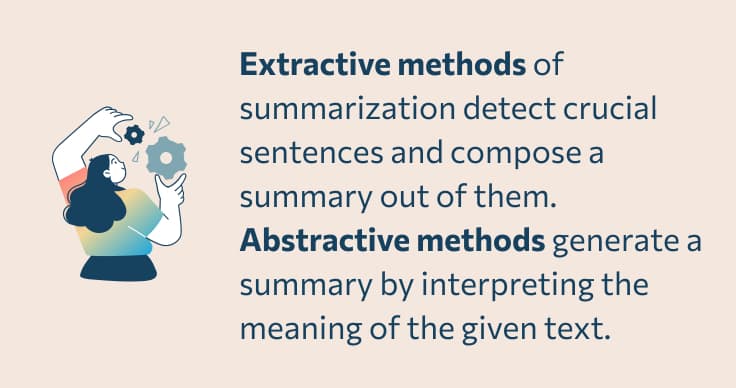Free Conclusion Writer
A good conclusion is an essential element of any academic text. It isn’t always easy to compose one, though. Our conclusion writer is meant to make this task easier for students. Simply insert your text and press the button – your conclusion is ready!
It is often said that conclusions are the most difficult part of any academic work. Your grades can drop because of a poorly written final paragraph. This is because it is the culmination of your entire work. Effective conclusions appeal to your audience and improve your academic performance.
All of this might sound fairly intimidating, but you don’t need to worry. After all, this is exactly the reason our team has created this tool. Below, we have answered the two questions you are probably asking yourself right now:
- How do you write a conclusion for me?
- How do I write my conclusion?
We explain how our conclusion writer works and what you should expect from it. If you want to write your conclusion on your own, we also have a couple of tips for you.
🦾 How Do You Write a Conclusion for Me?
If the introduction is your audience’s gradual entry into the world of your essay, then the conclusion should be their exit. To ensure this, we typically round up and summarize the key arguments at the end of the paper. Our conclusion writer is specifically designed to quickly and efficiently tie together the main points of your work. It will considerably speed up your essay writing process and allow you to spend more time on other responsibilities.
You are probably asking yourself: “So, how can this tool write me a conclusion?” In reality, the science behind it is more straightforward than it seems.

Our conclusion writer uses extractive methods. This means that it automatically selects the most crucial elements of your text. It scans through your paragraphs, identifying relevant sentences and phrases. Then, the tool ranks them in order of significance in relation to the meaning of the source. It brings the vital parts together, generating your closing paragraph. The extractive methods are considered the most successful for textual analysis.
It is what you should do to write your conclusion using our tool:
- Copy and paste your entire essay, research paper, or any other academic work into the window above.
- Choose the total number of sentences you want to have in your final paragraph.
- Finally, press the “Write a Conclusion” button. Our tool will automatically produce one for you within seconds!
You will be able to select keywords that you used or return to the generator to create another passage.
✍️ How Do I Write My Conclusion?
Information technologies are becoming more and more widespread. With our tool and such, you won’t have to worry about writing the perfect conclusion yourself. However, things become more complicated if you don’t have access to the Internet, like during exams. That is why we came up with a strategy for you. Here, we have explored what should be included in a conclusion outline.
The following will help you write a conclusion:
-
Summarize your findings.
Look over the points you made throughout your research paper, essay, project, etc. Briefly summarize them. Don’t just restate the same ideas all over again. Instead, try to show how they fit together to support your main argument.
-
Return to your thesis statement.
You need to bring the “story” back to the start for your work to make sense. With academic writing, you have to reflect on the thesis statement once more. Remind the audience of the purpose of your research. Once again, you should be careful not to repeat the same thing. In your conclusion, make sure to reword your thesis so that it reflects what you have argued in the body paragraphs.
-
Ask yourself why your findings are significant.
The conclusion is an excellent place to think about the significance of your thesis. Why should your readers pay attention to what you are saying? As you keep questioning the importance of your topic, also consider its influence. Connect your particular subject matter to broader implications, making your text informational and thought-provoking.
-
Offer further questions to study.
Intrigue your audience by proposing additional ideas for future research. You can either offer a potential solution to the problem or an action plan to follow through. Alternatively, you can leave them with even more questions that will require further study. This way, any potential researcher reading your paper can build on it later. Anyone else will be left with something to think about.
-
Steer clear of introducing new ideas.
You shouldn't bring in new points, arguments, or ideas, especially in your concluding sentence or paragraph in general. They will distract your readers from your research, confusing them. If you discover that you have something else to say, include it in the body paragraphs.
We hope that you will find our conclusion writer helpful in your work. If this isn’t exactly what you were looking for, take a look at our online summarizer. This useful tool will quickly and accurately create a summary of any text.
Updated:
🔗 References
- Conclusions – Purdue Writing Lab, College of Liberal Arts, Purdue University
- Ending the Essay: Conclusions – Pat Bellanca, the Writing Center at Harvard University
- Comparing Abstractive and Extractive Summarization of Evaluative Text: Controversiality and Content Selection – Jackie CK Cheung, University of British Columbia
